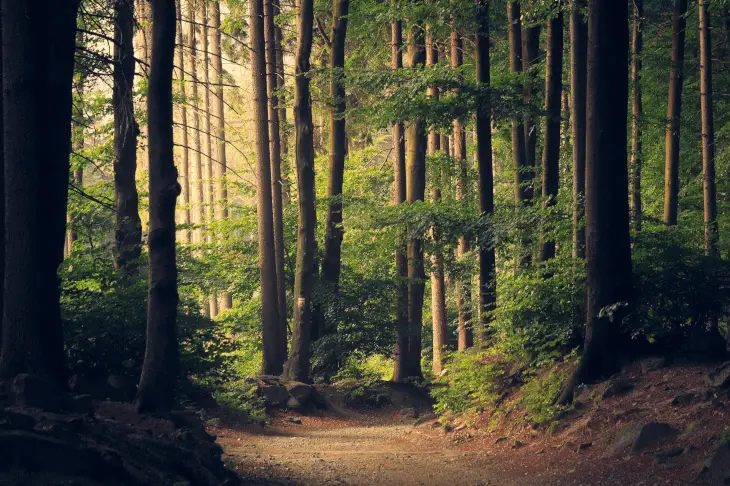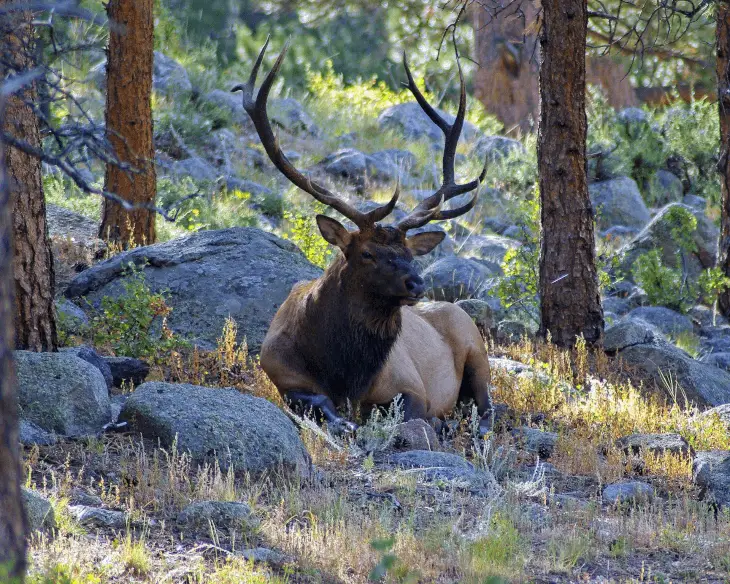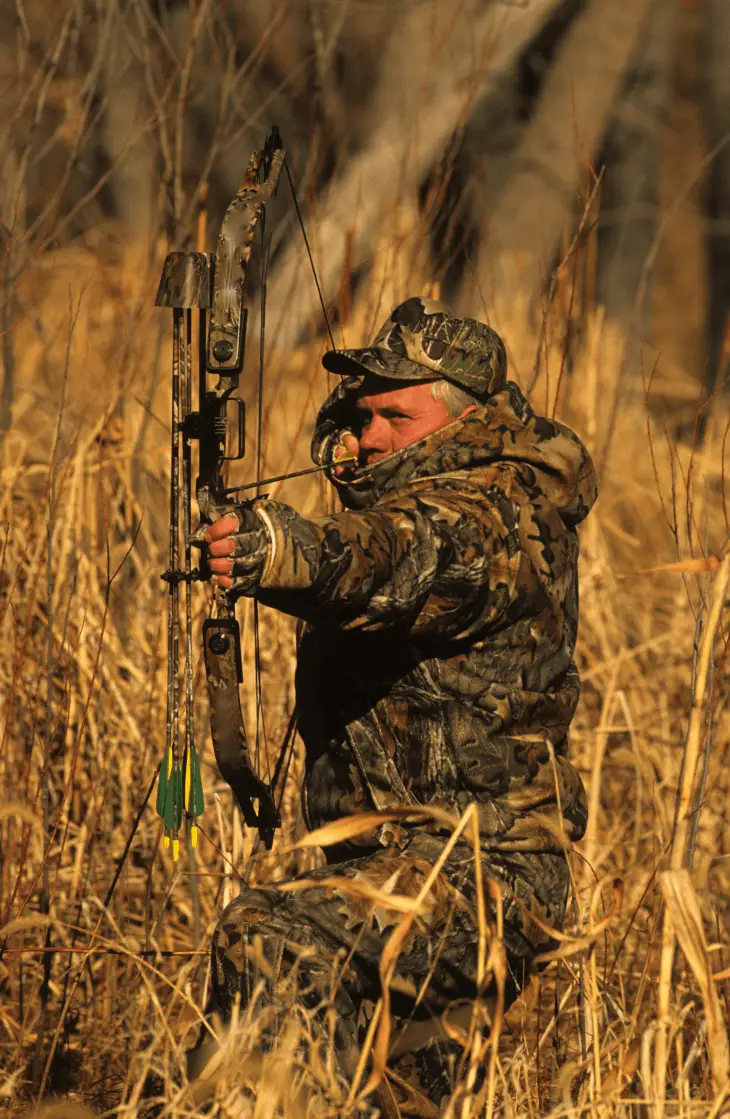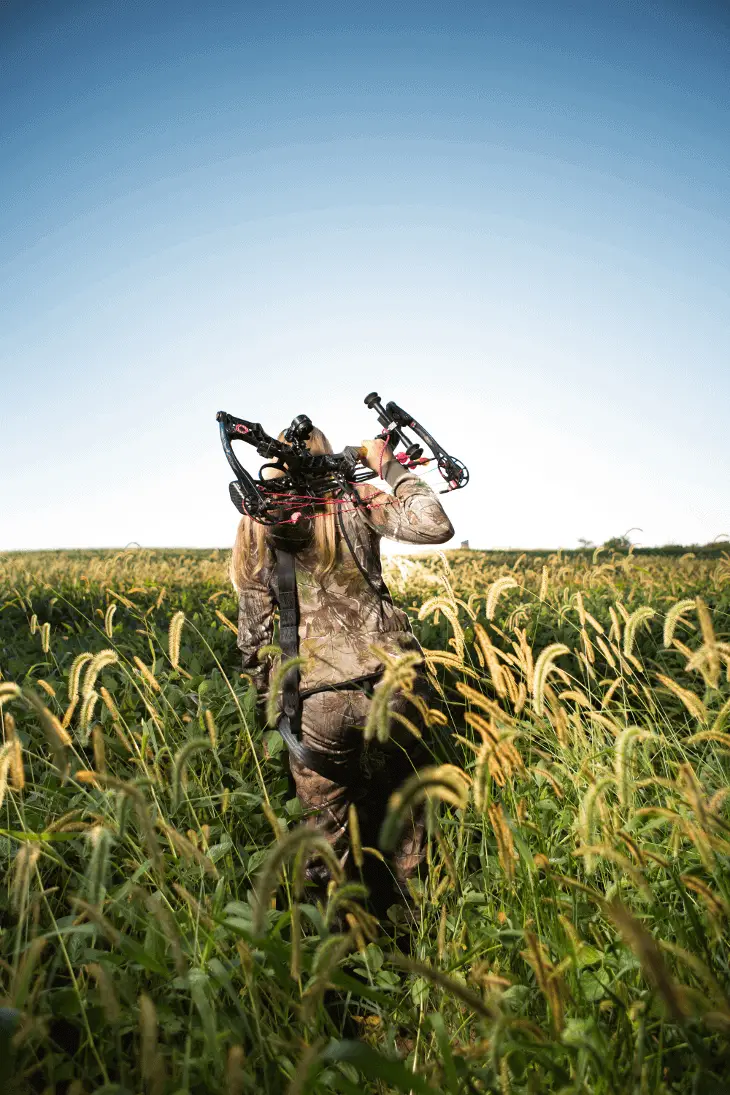There’s no doubt about it: bowhunting is dangerous, and it’s dangerous for a lot of reasons. Game can be unpredictable and aggressive, other hunters can be irresponsible and reckless, and perhaps most dangerous of all would be Mother Nature herself. Bowhunting—and hunting in general—can be a satisfying, life-affirming rite of passage, but if you don’t know what you’re doing, it can be incredibly risky.
So, regardless of whether you’re a veteran bowhunter or someone who’s taking his/her first trip into the woods, it’s wise to learn as much as you can about safety and safe hunting. We’ve put together the list below to give you some of the basics, and we’ve divided the tips into broad categories to make things a little clearer.
Keep in mind, this isn’t a complete list—there will always be some new and unforeseen way to endanger yourself when you’re out in the wild—but it’s a good start, and we’ll add to it from time to time. If you’ve got a tip we missed, we’d love it if you hopped over to our “Contact” page and let us know what we overlooked.
By the way, if you’re new to bowhunting and you run across some terms below that you’re unsure of, jump over to our Archery Glossary to find the definitions you need.
WILDERNESS PREPAREDNESS AND SURVIVAL

Being outside in nature, in the incredible outdoors, is one of the reasons why we all love hunting so much. But it’s easy to forget that nature doesn’t care a lick about you, and it’ll mess you up if you’re not prepared. Here are a few things to keep in mind.
Carry a First Aid Kit. It doesn’t need to a medical-grade, fancy-pants kit—you just need the basics, like bandages and band-aids, some gauze and maybe a small cloth, a small bottle of hydrogen peroxide for cleaning cuts, tweezers, and some aspirin. Most convenience stores will have them for a few dollars. If you’ve already got a first-aid kit in your pack, then…
Be Sure Your First Aid Kit Has Everything You Need. There’s nothing worse than getting nicked somewhere, and realizing you used all your bandages on a previous hunting trip. Make sure the kit is up to snuff every time you set out.
Bring Sunscreen. It may not seem like the most dangerous part of a hunting trip, but ask anyone who has suffered sunburns (or worse)—repeated skin damage from the sun is no fun.
Bring Bug Repellant. Bugs: also no fun. Whatever bug repellant you use, make sure it includes tick repellant—tick populations are surging, and Lyme’s Disease is a terrible burden—and test your chosen bug repellant before you go out into the field. If it doesn’t work—and some of them are garbage—keep looking until you find one that does.
Bring Water. It’s always amazing how much water you can lose, even when it’s cold outside. If you’re heading out—regardless of the climate—bring enough water for you (and then bring a little more!).
Always Bring a Waterproof Fire Kit. Sure, you plan on coming home before dusk, but even the best hunters among us get lost—and if you end up spending the night outside, you’ll be grateful you have it. You don’t need to be in arctic temperatures to experience hypothermia—once you get wet (and human beings are kind of designed to get wet—perspiring can be a blessing or a curse), your temperature can drop like a stone in still water. Fire kits = good planning.
Bring Your GPS… But Also Bring Along That Compass. 21st-Century hunting is a tech-heavy affair, and most of us having some sort of GPS system—and that’s a good thing, and one you should definitely have. But having an old-school tool that can orient you—and doesn’t need batteries that can run out—can be a life-saver. A good compass is an extremely important (and lightweight) bit of gear.
Carry a Cell Phone… and keep in a small plastic bag to make sure it doesn’t get wet or damaged. You used to need a global cell—and those are still pretty important if you’re going to be way out in the boonies—but even a small cell phone can pick up a signal these days.
Bring a Flashlight / Headlamp. If you’ve ever used a flimsy flashlight, you know how incredible a high-quality flashlight can be. And if you’ve ever used a high-quality headlamp… you know how much better it is than even a high-quality flashlight. Flashlights are good, headlamps are better. They’re a must-have if you plan on spending the night outside, and they’re a must-have if you don’t plan on spending the night outside.
(By the way—that all sounds like a lot, right? Especially if you’re still hunting, and you need to hold yourself in uncomfortable positions. But it all it takes is one instance where your life is in danger, and you’ll be very, very glad you brought your first aid kit / fire starter / compass / etc.)
Dress for the Worst-Case Scenario. Most hunters we know obsess about camouflage and scent masking, and forget the primary purpose of hunting clothes: keeping you safe and warm. Know your climate, look for the weather reports, and dress smart. A successful hunt isn’t worth much if you freeze to death.
Always Wear Your Hunter Orange. As you’ve learned in your hunter education class before you got your hunting license, you will be required in certain areas to wear certain colors. Obey the law. And…
Never Wear White. Keep away from wearing white clothing, like undershirts, that can get exposed—and make you look like a deer. Try to wear dark colors for your base layers. Last but not least…
Remember That Nature Will Mess You Up. All it takes is one good scare and you’ll realize how powerful and deadly nature can be. Use common sense, and don’t take unnecessary risks—if a rock ledge is wet, avoid climbing up it. If a natural wood bridge across a river doesn’t look sturdy, chances are it’s not.
GEAR SET-UP AND USAGE

Safety on the hunt doesn’t start when you’re glassing game—it starts at home, when you’re planning and running through your checklist. Here are some things to remember.
Give Your Gear a Full Check-Up. Having gear that’s good to go doesn’t only increase your odds of hunting success—it keeps you safe, too. So, look for signs of wear—check to see that the lamination on your bow isn’t flaking away from the limbs, and that the riser is solid and your sight / stabilizer / rest are attached and not wobbly; make sure your strings are strong and not fraying, and make sure any string silencers you have are working; and make sure your arrows are in good shape, with no dings or dents in the shaft. Run through each piece of equipment you’ll be using, and make sure it’s in good working order. And…
If Something Needs to Be Replaced, Replace It. Bowhunters—and hunters in general—are from all walks of life, but if there’s one commonality among many of the hunters and bowhunters we’ve met, it’s that they’re FRUGAL. Not cheap, mind you, but frugal. If something can be fixed, they’ll fix it instead of buying a fancy new one. That’s a good thing, of course, but if it means bowhunting with a piece of gear that’s no longer reliable—even after your fixes—then that’s dangerous. Swallow your pride, and replace gear that’s beyond fixing.
Ensure That Your Broadheads are Sharp. You’ve been planning all year and you’re ready to go: you’ve got your bow tuned perfectly, you’ve got your ghillie suit prepped, and you’ve broken in your brand-new hunting boots. You’re ready to go. All of that doesn’t matter if your arrows won’t do what they’re designed to do. Make sure your broadheads are as sharp as you can get them, and…
Be Careful When Sharpening and Inserting Your Broadheads. Those things are designed to be dangerous, and the cuts you get when handling them can be deep enough to cause nerve damage, so pay attention. You also need to…
Be Careful When Transporting Your Arrows. We don’t have any stats about this, but we’d bet that many of the bowhunting accidents that happen occur 1) before the hunt or right after it, when 2) the hunter is absent-mindedly moving / packing / removing arrows from a quiver. Always remember: an arrow is a deadly tool, and that’s why you use it. Be mindful.
Make Sure Everything is Tuned. People think archers spend most of their time shooting, but really, we spend most of our timing tuning. And there’s a reason for that—it’s important. Have your stuff ready to go, so that when an opportunity for game arises, you’re ready to take it down efficiently and ethically.
Keep Your Arrows in the Quiver… and keep them covered. This goes for when you’re getting ready and transporting your gear, but also when you’re on the hunt. Make sure the broadheads on your arrows are covered under a hood, and keep them there until the moment you’re ready to shoot.
Don’t Be Overbowed. Yes, feet per second is important. Yes, flat trajectory is important. But if you’re overbowed—that is, if your draw weight is more than you can handle, and you’re struggling mightily to pull the draw string back—you’re going to tax yourself, tire yourself out, and make lousy, inaccurate shots. Don’t be a tough guy—make sure your draw weight meets your state’s requirements, but don’t overdo it. A well-placed arrow from a bow with a lower draw weight can be a lot more effective than a poorly-shot arrow from a bow with a higher draw weight.
If You’re Traveling, Plan Your Trip. We’ve written an entire post about traveling with gear here.
TREE STAND SAFETY AND GUIDELINES
Tree stands offer incredible advantages—they allow you to patrol a wide swath of land from an excellent vantage point, and they can keep you from sharing your scent with some game on the ground. They’re fantastic, but without proper precaution, they pose some very serious threats to bowhunters. There are a lot of great hunters and very smart people who have done dumb things on tree stands, and paid a terrible price.
So, be extra careful when you’re up there. Tree stand safety is a subject matter unto itself, but here are some general guidelines:
Choose a Strong Tree. This would seem obvious, but it’s not, and here’s why: hunters will find an area of land they’re really optimistic about, but the trees in the area aren’t fantastic… and they’ll climb those trees anyway, because they want the shot. Don’t do this. If a tree doesn’t look like it can support you, don’t set up your tree stand in it. Look for damage or rot or weaknesses in the trunk, and read the instructions—tree stands usually come with instructions about the size of the tree, so pay attention.
Heed the Weight Capacity. The company that makes the tree stand should list the maximum amount of weight that the tree stand can hold (and if they don’t, use a different tree stand, because that’s… wait for it… shady). Seriously—pay attention to the weight capacity of the tree stand, and remember that the weight capacity will include your gear. AND, if you’ve put on a lot of weight since the last hunting season—it happens to the best of us—run your calculations again.
Be Suspicious of Old Hunting Towers. Hunting stands aren’t always the sturdiest structures in the world, and year-long exposure to the elements can eat away at them. And, if you find that your permanent tree stand isn’t stable, don’t use it.
Be Very Careful with Permanent Stands. Some trees stands are hammered into a tree, and they sit there all year, and we’d advise you to stay away from those. Many are actually in good hunting spots—that’s why they got put there in the first place—but they can be VERY dangerous.
ALWAYS Wear a High-Quality Safety Harness… and make sure it’s securely fastened. We can’t stress this enough. Falling-from-heights injuries are often really painful, and often permanent. You need the harness for your climb up the tree, while you’re up there, and when you’re coming down. Elevated stand = harness.
Examine Ladder Steps Before You Climb. Make sure they’re safe, and if they’re wet from rain or snow or dew, try to dry them off, and move extra slowly. Also…
Climb Safely, and Use the Three-Point Rule. The Three-Point rule is very simple: always make sure that you have three points of contact to whatever it is your climbing on, and move one body part at a time. If you’ve got both feet and your right hand on the ladder (both feet + your right hand = three points of contact), move your left hand to the next rung. Once you’re stable, move your right hand to the next rung, and keep both feet and your left hand on the ladder. Then move your right foot. Then your left foot. Move one body part at a time, so you always have three points of contact on the ladder.
Check on Your Safety Harness While You’re Up There. Even though you’re not moving around a lot, the harness can come loose. It’ll be unlikely if you’ve fastened everything correctly, but check it.
Use a Haul Line to Get Your Gear. Don’t climb with your bow of your gear—use a haul line to get everything up to you, and to lower it again.
Let Your People Know the Location of Your Stand. That’s good for you—if you need help, they’ll know where to find you—but it’s also good for them: if someone you love has an emergency, they’ll be able to seek your help, because you’ve let them know where you are.
Mind the Edge. When you’re up there, always be mindful of where the edge of the platform is. Most of the ledges are pretty small, and slipping and falling is not something you want to experience.
Don’t Nod Out. Falling asleep in a ground blind = not great, but not the worst thing in the world. Falling asleep in a tree stand = not great, and potentially dangerous.
Tree stands are incredible tools, but they’re dangerous, so be careful. And keep in mind this is not a complete list of tree stand safety points—these are some guidelines. Read your owner’s manual, call the company if you need to, and make sure you know everything you need to know in order to use your tree stand safely.
GOOD HUNTING PRACTICE
When you’re on the hunt—actually in the brush / on the mountain / wherever—there’s a lot to keep in mind. Here are some guidelines.
If You’re a Newbie, Go with Someone Who Knows the Ropes. Not only will you learn a lot (and you should quietly ask as many questions as you can), but if something goes wrong, your hunting partner can get help. Keep in mind, when you’re out on your own, even a small problem—like a sprained ankle—can become a huge problem. There’s safety in numbers.
Let People Know When You’ll Be Back. This is “best practices,” regardless of whether you head out alone or with a pal. Let people know when you’ll be back, so your people can look for you if something has happened.
Always Have Your Hunting License with You. This a set of instructions to keep you physically safe, but this tip with keep you safe in a legal sense. Keep your hunting license on you (and preferably sealed in a waterproof envelope or bag) in case you run into a game officer or state official. And, of course, always know and follow the hunting regulations set up by your state or province.
Stay Within Your Hunting Range. Even if it’s very large, the area you’re hunting on ends someplace. Whether it’s private land or public, make sure you hunt within the land designated for hunting, and stay out of any areas that are restricted, because…
Understand that You May Not Be—and Probably Aren’t—the Only Hunter Out There. When hunting, you need to be aware of the harm that other hunters can do to you—but also of the harm that you can to other hunters. Always—always, always, always—be certain of what you’re shooting at, and always consider that there may be a hunter behind the game you want to hit. Once you’ve spotted game, make sure there are no hunters behind it. You can miss—and your arrow can hit the other hunter—but even if you hit your target, it can pass through your target and hit the other hunter. Also keep in mind that…
Some of the People Out There May Not Be Hunters. There are plenty of areas that are designed not only for hunting, but for hiking and camping as well, and many of those hikers have no idea that you’re out there hunting, and won’t be looking out for you. That puts all the responsibility for their safety on you.
Keep a Distance from Farms and Roads. You may have heard that most hunting is done within a single mile of the nearest road. We couldn’t find any research that shows that to be the case, but it sure sounds true, and if you’re within a mile of the road, that means you’re near other people. Always, always, always assume you’re not the only one in your location.
Don’t Hunt on Private Land Without Permission. That seems like a no-brainer—and the right thing to do—but there’s an element of self-preservation to it, too: if a private landowner has allowed another hunter to use his land, and that land owner doesn’t know that you’re also on his land… chances are the hunter doesn’t know you’re there either, and he thinks there’s no one out there hunting with him. That makes it more dangerous for you. So, always get permission to hunt on private land because 1) it’s the law, 2) it’s the right thing to do, and also because 3) it’s MUCH more dangerous for you when you don’t have permission.
Be in Good Shape, and Stay Within Your Limits. Bowhunting is a strenuous activity, and it’s important to know your limitations. If you’re spot-and-stalk hunting—particularly out West, where you’ll need to cover a lot of land—chances are you’ll come across some dangerous ground. If you’re not in shape to cover it, you’re putting yourself at risk. Try to stay in good shape, and get fit before you head out. Last but not least…
Know the Land Well. The better you know the land on which you’re hunting, the more likely you’ll be able to get the game you’re after, and the less likely you are to get lost.
SHOOTING SAFETY TIPS
Know What’s in Front of, Behind, and Beyond Your Target. Your arrows can travel fast and far, and that’s especially true if you’re using a high-poundage compound. You need to have a full understanding of everything around your target, including what’s behind your target. Bowhunters really need to keep that in mind, because
1) if you miss, your arrow—along with that deadly broadhead—can keep traveling far beyond the target that you’ve missed, and
2) even if you do hit your target, your arrow can pass through your quarry and continue sailing beyond it—towards anything behind it. It’s very important to have total understand of the situation around your quarry.
Don’t Ever Shoot Over a Ridge. You have no idea what’s on the other side of that ridge. These are sometimes called “skyline shots,” and they’re incredibly dangerous. Regardless of how great that game is, it’s a no-go.
Only Point Your Bow and Arrow at a Target. Archery Safety Rule #1: If you don’t want to hit it, don’t point your bow at it. That means nocking your arrow only when it’s safe and you’re certain you’re going to shoot.
Be Extra Careful During Twilight Hours. The light in the early morning and the early evening—heck, even the light at the height of day—can play tricks on you, and your vision can be hampered. If you have any doubts at all about your target, do not continue.
Be Careful of the Beast! Bowhunting requires you to be very, very close to your quarry. Hunters who use rifles can sit at a safe distance, but bowhunters need to get up close and personal with the game they want to harvest. And—as we’ve mentioned many times on this site—wild game is dangerous! Always expect that an animal will be aggressive, and your homework—know and understand the animal’s habitats and behaviors.
COMMON SENSE / MISCELLANEOUS SAFETY TIPS
Here are few pointers that didn’t quite fit into the sections above, but we should definitely mention.
No Drugs, No Alcohol. When you’re bowhunting, you’re engaged in a deadly activity. Drugs and alcohol dull your senses. Do the math. When you’re drinking, you’re drinking. When you’re hunting, you’re hunting. Words to live by. But, remember that…
“Drugs” Includes Medication. Plenty of bowhunters—including our fathers and grandfathers, who might be getting up there in years—are on some sort of medication. If that medication is causing any side effects, such as lightheadedness, dizziness, weakness, or vision issues, you may need to sit the trip out until those side effects cease. If your medication endangers you or the people around you, it’s the right thing to do.
Be a Good Archer. This one seems obvious, but it’s important: develop your skills. The more time you spend practicing archery, following archery safety protocol, and honing your aim, the safer—and more effective—bowhunter you’ll be.
Be Careful Around Young Bowhunters and Newbies. We don’t have any research to back this up, but in our experience, the people who are most prone to harming themselves or others are novice bowhunters. That makes sense—new bowhunters and younger folks may not know the ropes, and they probably don’t have as much experience as an older hunter. If you’re heading out with newbies or young folks, be extra careful, and be sure to keep an eye on them. Literally—keep an eye on their every move!
Got a Safety Tip for Us?
As we mentioned, no list of safety tips is ever complete, and if you’ve got something you think we should add, please jump over to our “Contact” page and let us know. We’d be glad to update the list.
As always, have fun, be safe, and happy hunting!




